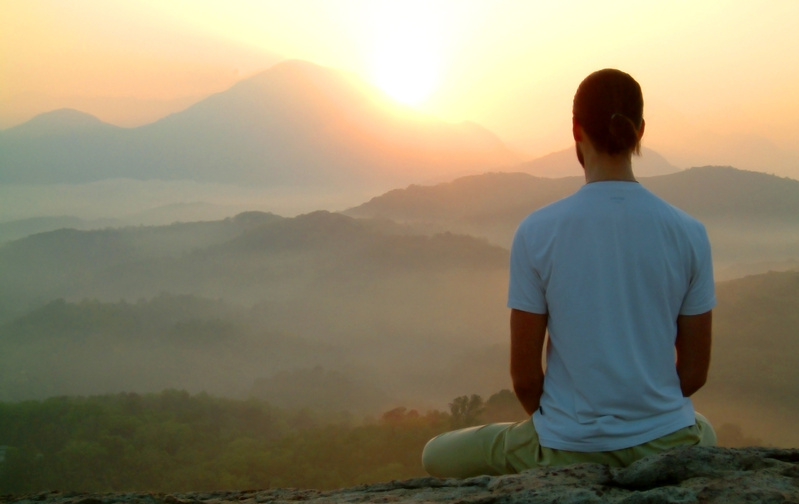By Br. John Mark Falkenhain, OSB, Ph.D.
With the enforcement of social distancing and shelter in place orders, many friends and acquaintances have jokingly suggested to us monks: “This probably hasn’t meant a lot of changes for you!” And, for the most part, they are correct. We monastics are used to staying put, not being out and about, working at home, and spending most of our time without close friends and family around us. We’re a little more comfortable with silence and with a visual and social landscape that doesn’t change much. Of course, we have had to be more intentional about hand-washing, not sitting as close in choir, and using gloves when waiting tables, but the realities of silence and limited mobility are circumstances we have already gotten used to. And by choice.
For centuries, cloistered religious, hermits and contemplatives of all kinds have chosen to “shelter in place.” By placing limits on our travels, our relationships and even our entertainments, we are forced to explore more deeply and in greater detail a narrower slice of God’s creation. The idea is to minimize the noise and the distractions and to discover God’s presence in the ordinary, the close-by, and ultimately within ourselves. By moving a little bit apart from others, the contemplative aims to seek God alone, by oneself, in order to pursue a relationship with God that abides within – one unmediated by another person.

Experiencing God in other people and in his unlimited creative brilliance are certainly acceptable and important ways of relating to God; but even in the most solitary confinement, or perhaps especially in the most solitary of situations, we discover that God is still abundantly present and that we are never alone.
Within the contemplative tradition, the “house” has been used as a metaphor to speak about the human person. Recall Saint Theresa of Avila’s interior castle and Saint John of the Cross’ recognition of inner silence as the threshold to contemplation: “my house being now all stilled.” Abba Moses, the desert father, extends this person-as-house metaphor to the monk’s cell when he admonishes the monk to go to his cell “and it will teach you everything.” While not everyone is called to be a Carthusian or a Trappist monk, every Christian is called to a contemplative life in Christ to some degree.
This time of being “house-bound” might be an invitation to tend to one’s contemplative vocation – to work at transforming experiences of silence into solitude, loneliness into greater intimacy with God, and boredom into the never ending challenge of seeking God “in here” rather than “out there.”
It’s not easy. The early monastic theologian John Cassian warns us of acedia, the “noon day devil” – that urge to get out and see what is happening in the rest of the world once we have become bored with the same old scenery and the mundaneness of our confined spaces. Still, if we can recommit to our confinement and take on a little extra “house work” – both in the literal and the metaphorical sense – we may finally succeed at straightening up some long neglected corner of our inner life, pitching habits we should have thrown out long ago, and becoming aware of the overwhelming love of God in even the small, limited, quiet, and yet meaningful life that is our own.
And don’t forget the benefits to others. Just as remaining sheltered in place benefits not only us but also larger society, so does pursuing a deeply personal relationship with God lead to benefits for the wider world. As we draw closer and closer to our loving God, we are compelled to bring to him those whom we love and are concerned about: the sick, the poor, the homeless, the depressed.
Consider using this time of social isolation to focus your gaze more intensely on the bit of God’s creation right around and within you. Accept the contemplative challenge of discovering God in the small, the limited, the quiet, and the unexciting.
Resources
- Into the Silent Land: A Guide to the Christian Practice of Contemplation, by Martin Laird (Oxford University Press, 2006)
- Transforming Loneliness: Solitude as a Skill for Celibate Living, SLIconnect webinar
- How We Love: A Formation for the Celibate Life, by Br. John Mark Falkenhain, OSB (Liturgical Press, 2019). Chapter 13: Solitude
- Monastic Practices, by Charles Cummings, OSCO. Chapter VI on Silence & Chapter XI on The Monastic Cell
- The Interior Castle, by St. Theresa of Avila
